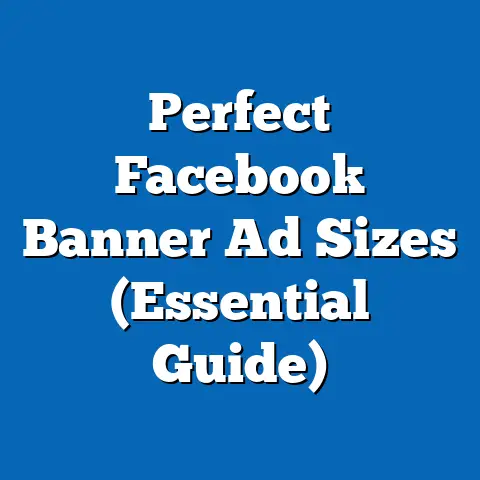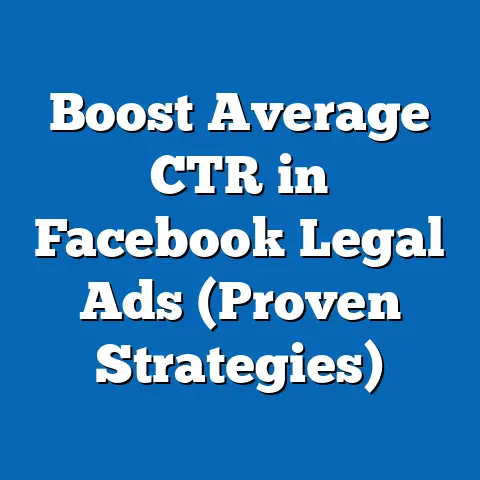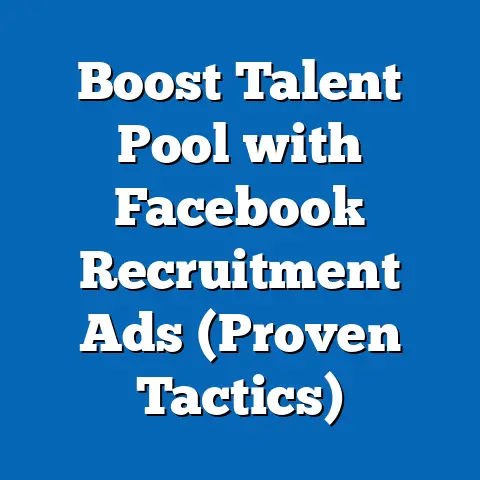Navigating iOS 14’s Impact on Facebook Ads (Expert Insights)
Navigating iOS 14’s Impact on Facebook Ads: Expert Insights
The digital advertising landscape is constantly evolving, and one of the most significant shifts in recent years came with Apple’s iOS 14 update. This update, primarily focused on enhancing user privacy, introduced the App Tracking Transparency (ATT) framework, which has had a profound impact on how digital advertisers, especially those relying on Facebook Ads, operate. Before iOS 14, I remember a sense of almost reckless abandon. We could target so precisely, track every click, and build audiences that felt eerily accurate. It was effective, sure, but maybe a little too effective. The iOS 14 update forced us to rethink our approach, and in many ways, that was a good thing. This article will explore the intricacies of this update, its immediate and long-term effects, and the strategies and expert insights needed to navigate this new era of Facebook advertising.
Understanding iOS 14 and Its Key Features
iOS 14 was officially launched in September 2020, but the real game-changer for advertisers came with the rollout of App Tracking Transparency (ATT) in early 2021. ATT requires apps to explicitly ask users for permission to track their activity across other companies’ apps and websites. This simple prompt – “Allow [App Name] to track your activity across other companies’ apps and websites?” – has had a monumental impact.
The Significance of User Privacy
The iOS 14 update reflects a broader trend towards increased user awareness and concern about data privacy. Consumers are becoming more conscious of how their data is collected, used, and shared, and they’re demanding more control over their personal information. This shift in consumer preference has forced tech giants like Apple to prioritize privacy in their operating systems. I’ve noticed this shift firsthand. Friends and family who previously clicked “accept all” on every cookie banner are now actively reading privacy policies and opting out of tracking.
How iOS 14 Affects Facebook’s Data Collection
The ATT framework directly impacts Facebook’s ability to collect data for ad targeting and measurement. Prior to iOS 14, Facebook could track user behavior across apps and websites without explicit consent, allowing them to build detailed user profiles for targeted advertising. With ATT, a large percentage of users choose to opt out of tracking, significantly reducing the amount of data available to Facebook. This means less data for building custom audiences, less accurate attribution, and a more challenging environment for personalized advertising. It’s like trying to paint a detailed portrait with only half the colors available.
Takeaway: iOS 14 and the ATT framework have fundamentally changed the way data is collected and used for advertising. Understanding these changes is crucial for adapting your Facebook Ads strategy.
The Immediate Effects on Facebook Advertising
The immediate aftermath of the iOS 14 update was felt across the entire Facebook advertising ecosystem. Metrics that advertisers had long relied on started to fluctuate, and the effectiveness of many campaigns diminished.
Decreased Tracking Accuracy
One of the most significant impacts was the decrease in tracking accuracy. With fewer users opting into tracking, Facebook’s ability to accurately attribute conversions to specific ads was significantly reduced. This made it more difficult to measure the true ROI of ad campaigns and optimize for performance. I remember one e-commerce client specifically mentioning how sales appeared to be dropping despite ad spend remaining constant. It turned out the attribution window was off due to the iOS 14 update, causing Facebook to severely underreport purchases.
Impact on Custom and Lookalike Audiences
Custom audiences, built from website visitors or customer lists, and lookalike audiences, which are created based on the characteristics of existing customers, also suffered. With less data to work with, these audiences became less accurate and effective. This meant that ads were potentially being shown to less relevant users, leading to lower engagement and conversion rates. It was like trying to find a specific grain of sand on a beach – much harder with blurry vision.
To illustrate, think about a retargeting campaign aimed at users who abandoned their shopping carts. Before iOS 14, we could reliably track these users and show them targeted ads to encourage them to complete their purchase. After the update, a significant portion of these users became “invisible” to Facebook, making it harder to re-engage them.
Expert Insights
“The iOS 14 update forced us to rethink our entire approach to Facebook advertising,” says Sarah Johnson, a digital marketing consultant specializing in e-commerce. “We had to shift our focus from precise targeting to broader strategies and invest more in first-party data.” I completely agree. The days of hyper-targeting are gone, at least for now.
Takeaway: The iOS 14 update led to decreased tracking accuracy and reduced effectiveness of custom and lookalike audiences, forcing advertisers to adapt their strategies.
Adapting Strategies in Response to the Changes
In the face of these challenges, marketers have had to adapt and find new ways to achieve their advertising goals. This has involved diversifying ad spend, experimenting with new ad formats, and focusing on first-party data collection.
Diversifying Ad Spend
One of the most common responses to the iOS 14 update has been to diversify ad spend across different platforms. Rather than relying solely on Facebook, advertisers are exploring other channels such as Google Ads, TikTok, and even traditional media. This helps to mitigate the risk associated with relying on a single platform and allows advertisers to reach a wider audience. It’s like diversifying your investment portfolio – don’t put all your eggs in one basket.
Experimenting with New Ad Formats
Another strategy is to experiment with different ad formats on Facebook. For example, lead generation ads, which allow users to submit their information directly within the Facebook platform, can be a more effective way to capture leads without relying on external tracking. Similarly, focusing on video ads and engaging content can help to increase brand awareness and drive traffic to your website through more organic means. I’ve seen a resurgence in carousel ads as well. They provide a visual storytelling experience that can be highly engaging.
Increased Emphasis on First-Party Data
Perhaps the most important adaptation has been the increased emphasis on first-party data collection. This involves collecting data directly from your customers through your own website, CRM system, and other channels. By building a strong foundation of first-party data, you can create more accurate and effective custom audiences and improve the overall targeting of your ad campaigns.
Here are a few ways to collect first-party data:
- Email Marketing: Encourage users to sign up for your email list and collect data through surveys and preference centers.
- Website Analytics: Use tools like Google Analytics to track user behavior on your website and identify patterns and trends.
- CRM Systems: Integrate your CRM system with your Facebook Ads account to create custom audiences based on customer data.
- Loyalty Programs: Reward customers for providing their information and engaging with your brand.
I’ve personally doubled down on email marketing. Offering valuable content upgrades in exchange for email addresses has proven to be a highly effective way to build a first-party data list.
Takeaway: Adapting to the iOS 14 update requires diversifying ad spend, experimenting with new ad formats, and focusing on first-party data collection.
Long-Term Implications for Facebook Ads
The iOS 14 update is not just a temporary setback; it represents a fundamental shift in the digital advertising landscape. The long-term implications for Facebook Ads are significant and will require ongoing adaptation and innovation.
Rethinking Attribution Models
One of the biggest challenges is rethinking attribution models. With less data available, it’s harder to accurately attribute conversions to specific ads. This means that advertisers need to rely on more sophisticated attribution models that take into account the complex customer journey across multiple touchpoints.
For example, instead of relying solely on last-click attribution, which attributes the conversion to the last ad a user clicked on, consider using a multi-touch attribution model that gives credit to all the ads a user interacted with before converting. This can provide a more accurate picture of the true impact of your ad campaigns.
Evolving Performance Metrics
Advertisers also need to evolve their performance metrics. Rather than focusing solely on metrics like cost per acquisition (CPA) and return on ad spend (ROAS), which are heavily reliant on accurate tracking, consider focusing on broader metrics like brand awareness, engagement, and customer lifetime value.
These metrics can provide a more holistic view of the impact of your advertising efforts and help you to make more informed decisions about your ad spend.
The Future of Personalized Advertising
The iOS 14 update has raised questions about the future of personalized advertising. While personalized ads can be highly effective, they also raise privacy concerns. Advertisers need to find a balance between personalization and privacy, ensuring that they are delivering relevant ads without infringing on user privacy.
One potential solution is to focus on contextual advertising, which serves ads based on the content of the website or app a user is currently viewing, rather than relying on personal data. This can be a more privacy-friendly way to deliver relevant ads and engage users.
Takeaway: The long-term implications of iOS 14 for Facebook Ads include rethinking attribution models, evolving performance metrics, and finding a balance between personalization and privacy.
Expert Predictions and Future Trends
To gain further insights into the future of Facebook advertising post-iOS 14, I’ve compiled predictions from industry experts and identified emerging trends in digital marketing.
Expert Predictions
“The future of Facebook advertising will be more about building relationships with customers and less about hyper-targeting,” says David Lee, CEO of a leading digital marketing agency. “Brands will need to focus on creating valuable content and engaging experiences that resonate with their target audience.”
I think David is spot on. The focus needs to shift from aggressive targeting to building genuine connections.
Another expert, Emily Carter, a social media strategist, predicts that “Facebook will continue to invest in privacy-enhancing technologies and explore new ways to deliver personalized ads without relying on third-party data.”
Emerging Trends
Several emerging trends in digital marketing may be influenced by the changes brought about by iOS 14:
- The Rise of Alternative Advertising Channels: Advertisers are increasingly exploring alternative advertising channels such as podcast advertising, influencer marketing, and native advertising.
- The Shift Towards Privacy-Focused Advertising: Privacy-focused advertising practices, such as contextual advertising and differential privacy, are gaining traction as advertisers seek to comply with privacy regulations and respect user preferences.
- The Importance of Data Clean Rooms: Data clean rooms, which allow advertisers to analyze data from multiple sources without sharing the underlying data, are becoming increasingly popular as a way to improve targeting and measurement while protecting user privacy.
Takeaway: Expert predictions suggest a shift towards building relationships with customers and exploring privacy-enhancing technologies, while emerging trends include the rise of alternative advertising channels and privacy-focused advertising practices.
Conclusion
Navigating the impact of iOS 14 on Facebook Ads requires adaptability, innovation, and a willingness to embrace new strategies. The changes brought about by this update represent a fundamental shift in the digital advertising landscape, and advertisers need to be prepared to adapt and evolve in order to succeed.
By diversifying ad spend, experimenting with new ad formats, focusing on first-party data collection, rethinking attribution models, and evolving performance metrics, marketers can mitigate the impact of iOS 14 and continue to achieve their advertising goals.
The key is to stay informed, stay flexible, and never stop learning. The digital advertising landscape is constantly evolving, and those who are willing to adapt will be the ones who thrive. While the iOS 14 update initially felt like a setback, it’s ultimately forcing us to become better, more creative, and more ethical marketers. And that’s a good thing for everyone.






